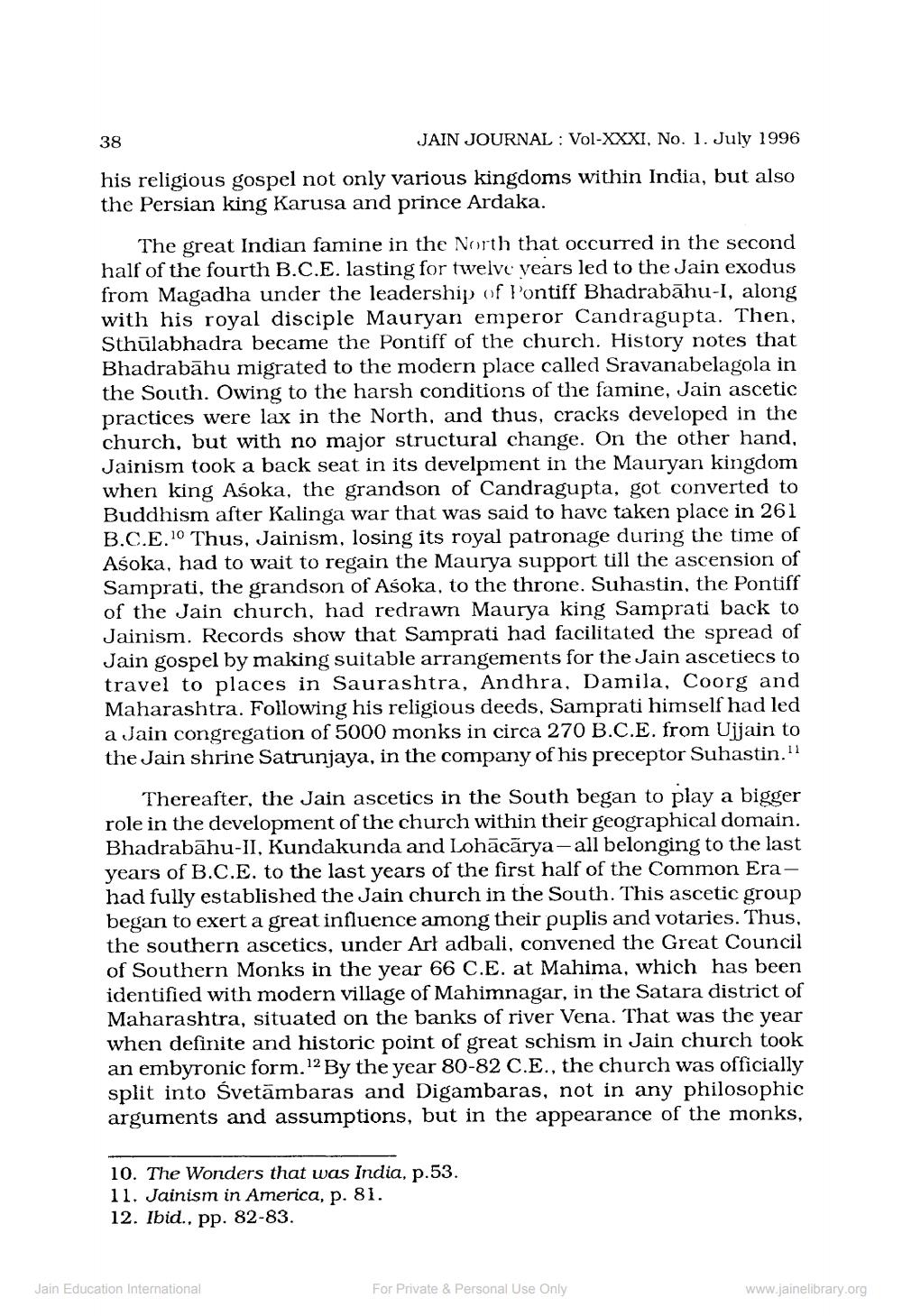________________
38
JAIN JOURNAL : Vol-XXXI, No. 1. July 1996 his religious gospel not only various kingdoms within India, but also the Persian king Karusa and prince Ardaka.
The great Indian famine in the North that occurred in the second half of the fourth B.C.E. lasting for twelve years led to the Jain exodus from Magadha under the leadership of Pontiff Bhadrabahu-I, along with his royal disciple Mauryan emperor Candragupta. Then, Sthūlabhadra became the Pontiff of the church. History notes that Bhadrabāhu migrated to the modern place called Sravanabelagola in the South. Owing to the harsh conditions of the famine, Jain ascetic practices were lax in the North, and thus, cracks developed in the church, but with no major structural change. On the other hand, Jainism took a back seat in its develpment in the Mauryan kingdom when king Asoka, the grandson of Candragupta, got converted to Buddhism after Kalinga war that was said to have taken place in 261 B.C.E.10 Thus, Jainism, losing its royal patronage during the time of Asoka, had to wait to regain the Maurya support till the ascension of Samprati, the grandson of Asoka, to the throne. Suhastin, the Pontiff of the Jain church, had redrawn Maurya king Samprati back to Jainism. Records show that Samprati had facilitated the spread of Jain gospel by making suitable arrangements for the Jain ascetiecs to travel to places in Saurashtra, Andhra, Damila, Coorg and Maharashtra. Following his religious deeds, Samprati himself had led a Jain congregation of 5000 monks in circa 270 B.C.E. from Ujjain to the Jain shrine Satrunjaya, in the company of his preceptor Suhastin.!!
Thereafter, the Jain ascetics in the South began to play a bigger role in the development of the church within their geographical domain. Bhadrabahu-II, Kundakunda and Lohācārya-all belonging to the last years of B.C.E. to the last years of the first half of the Common Erahad fully established the Jain church in the South. This ascetic group began to exert a great influence among their puplis and votaries. Thus, the southern ascetics, under Art adbali, convened the Great Council of Southern Monks in the year 66 C.E. at Mahima, which has been identified with modern village of Mahimnagar, in the Satara district of Maharashtra, situated on the banks of river Vena. That was the year when definite and historic point of great schism in Jain church took an embyronic form.12 By the year 80-82 C.E., the church was officially split into Svetämbaras and Digambaras, not in any philosophic arguments and assumptions, but in the appearance of the monks,
10. The Wonders that was India, p.53. 11. Jainism in America, p. 81. 12. Ibid., pp. 82-83.
Jain Education International
For Private & Personal Use Only
www.jainelibrary.org




